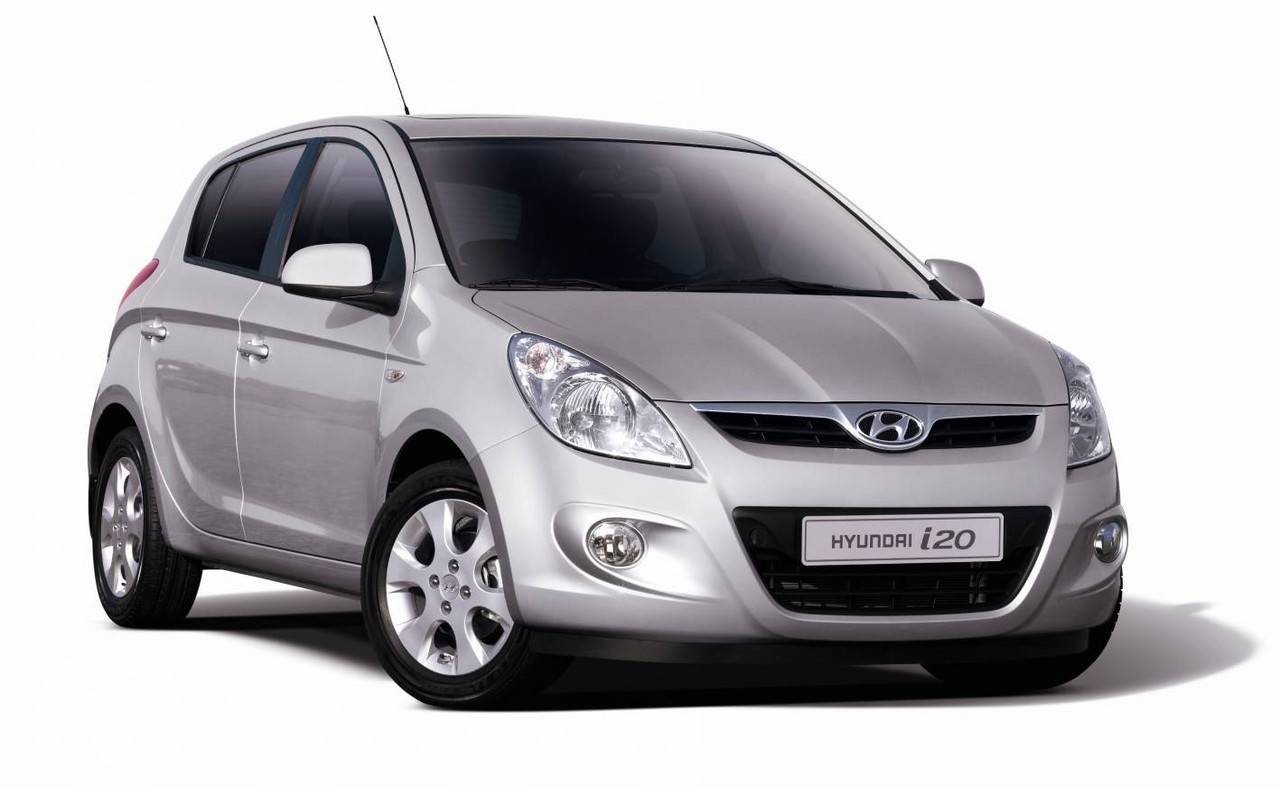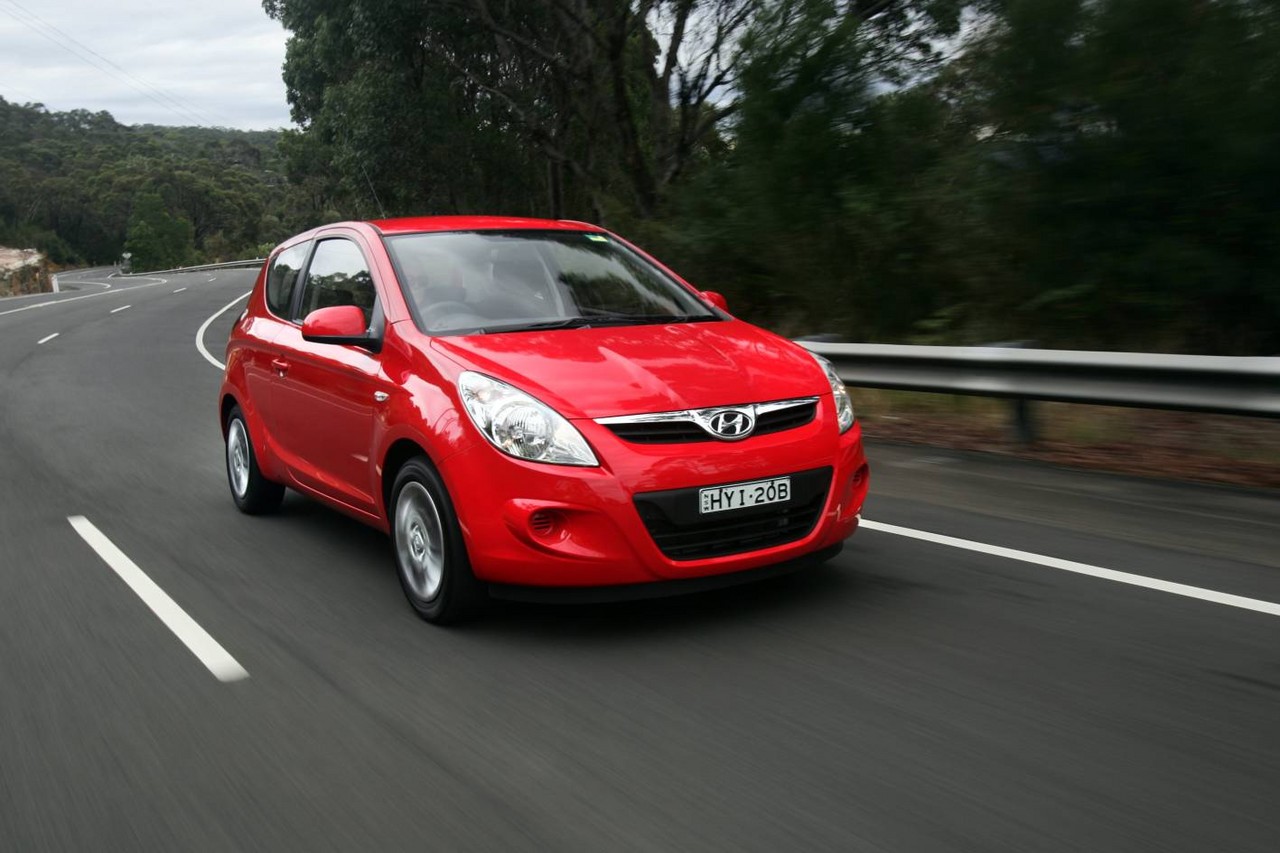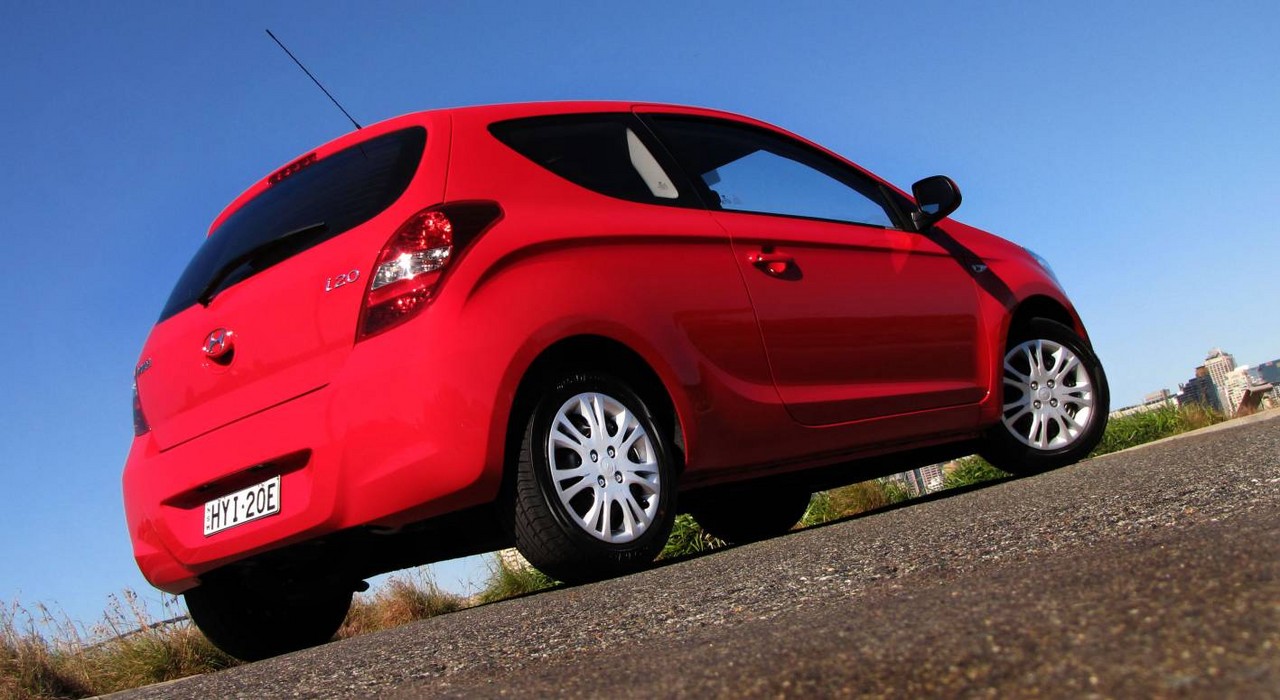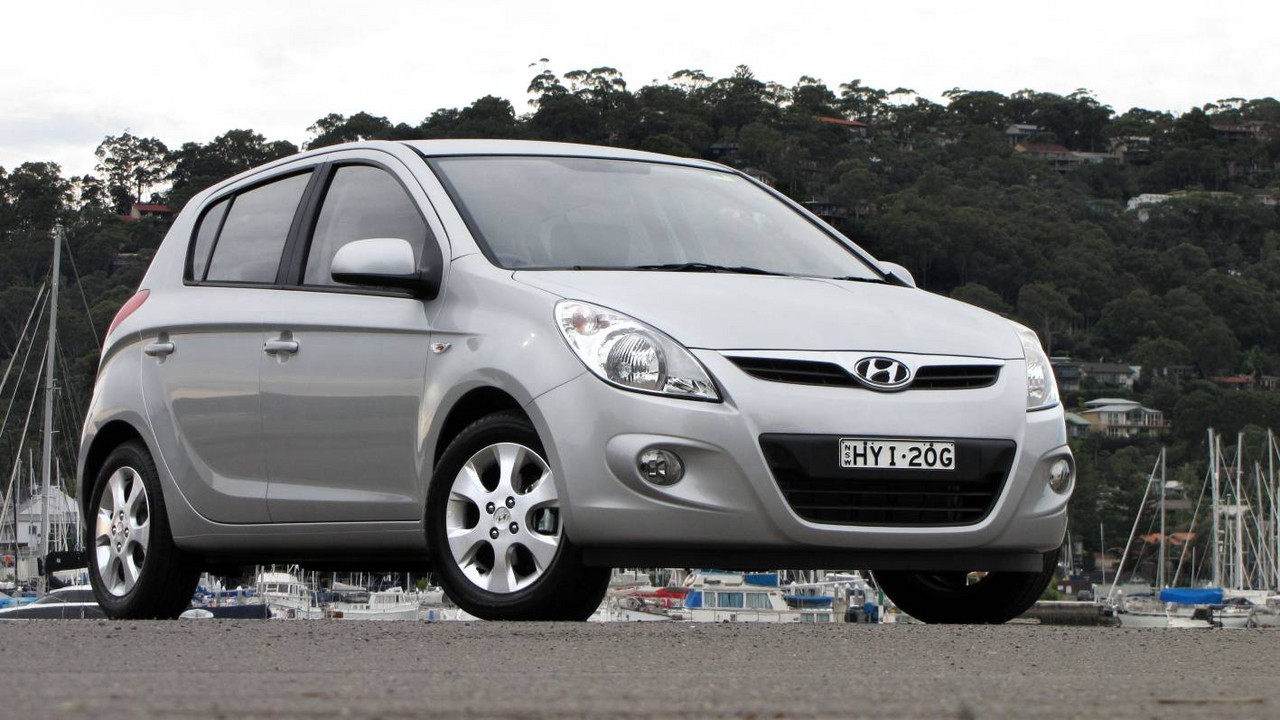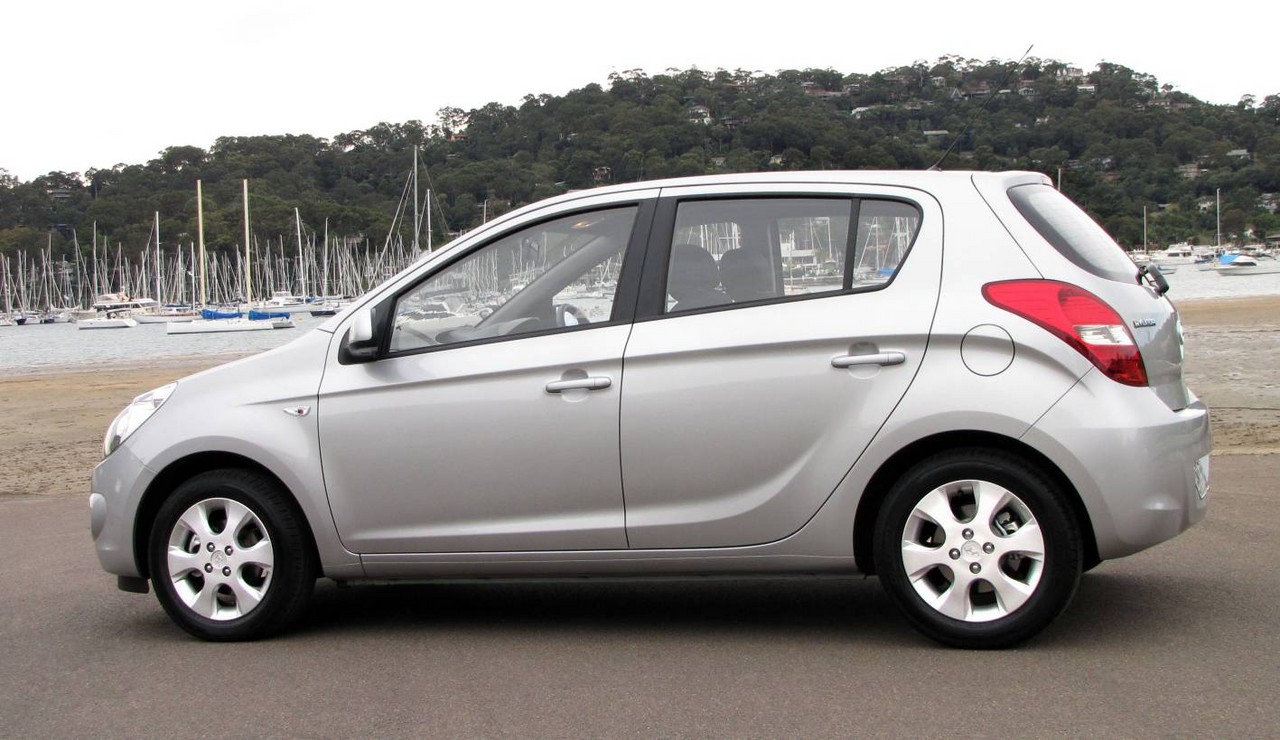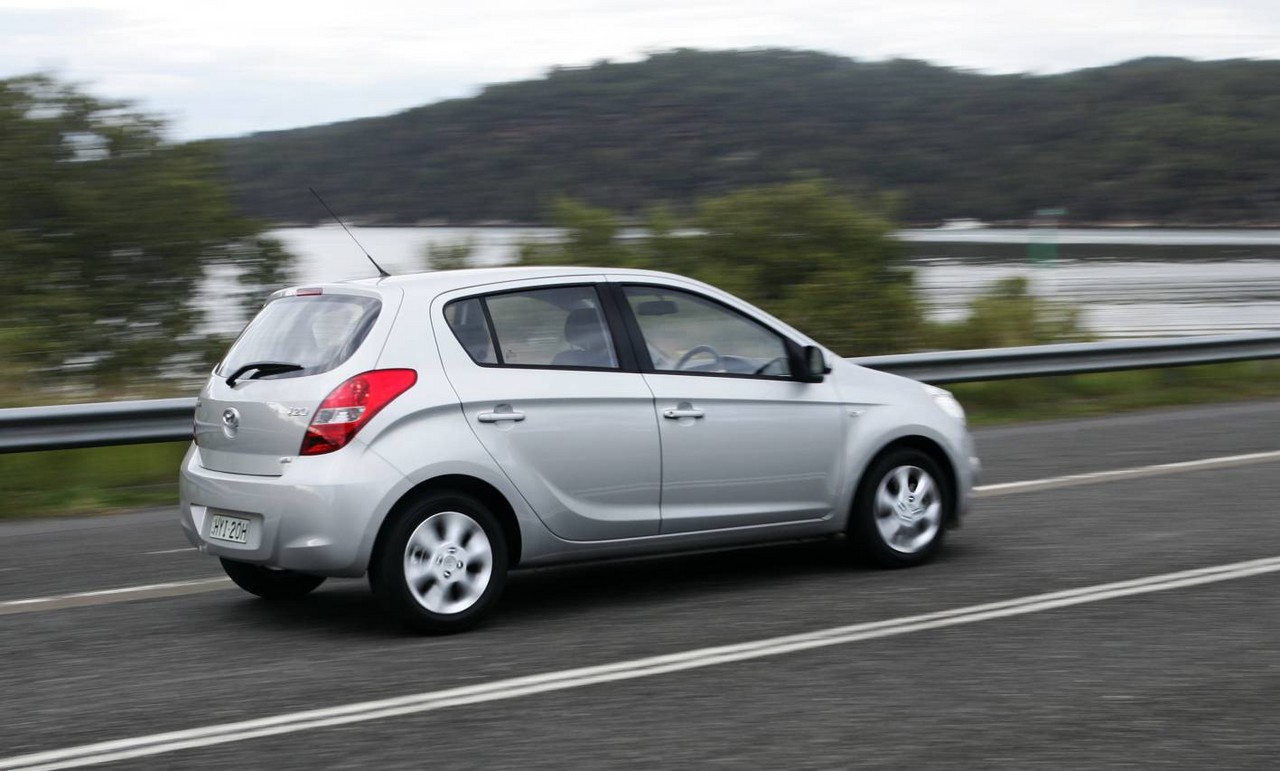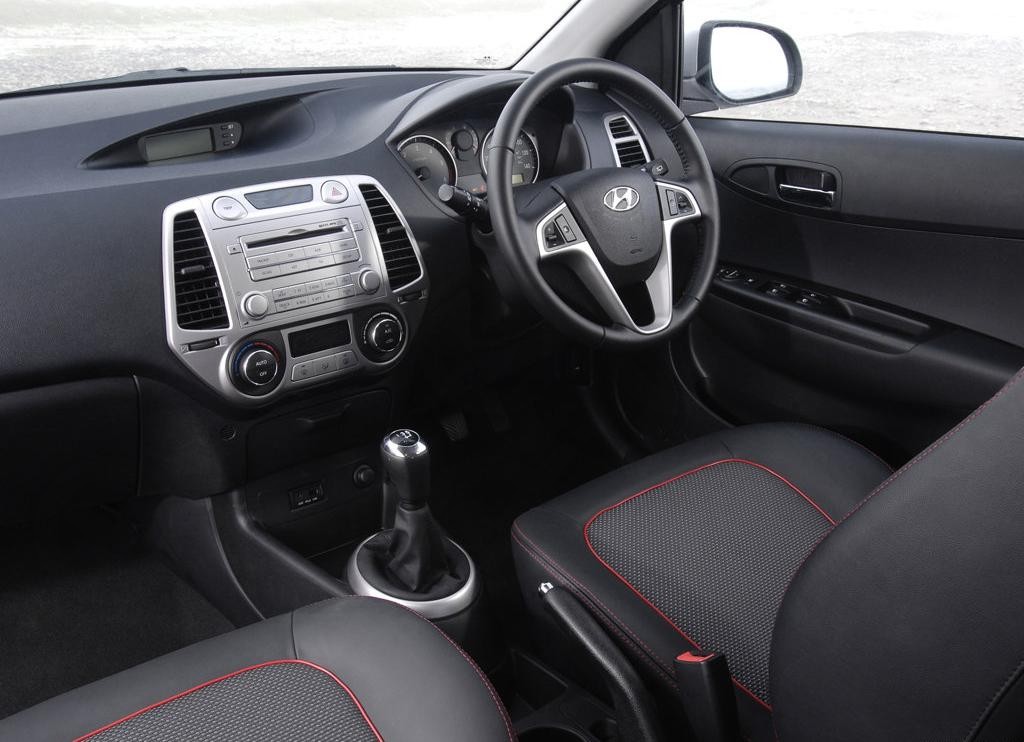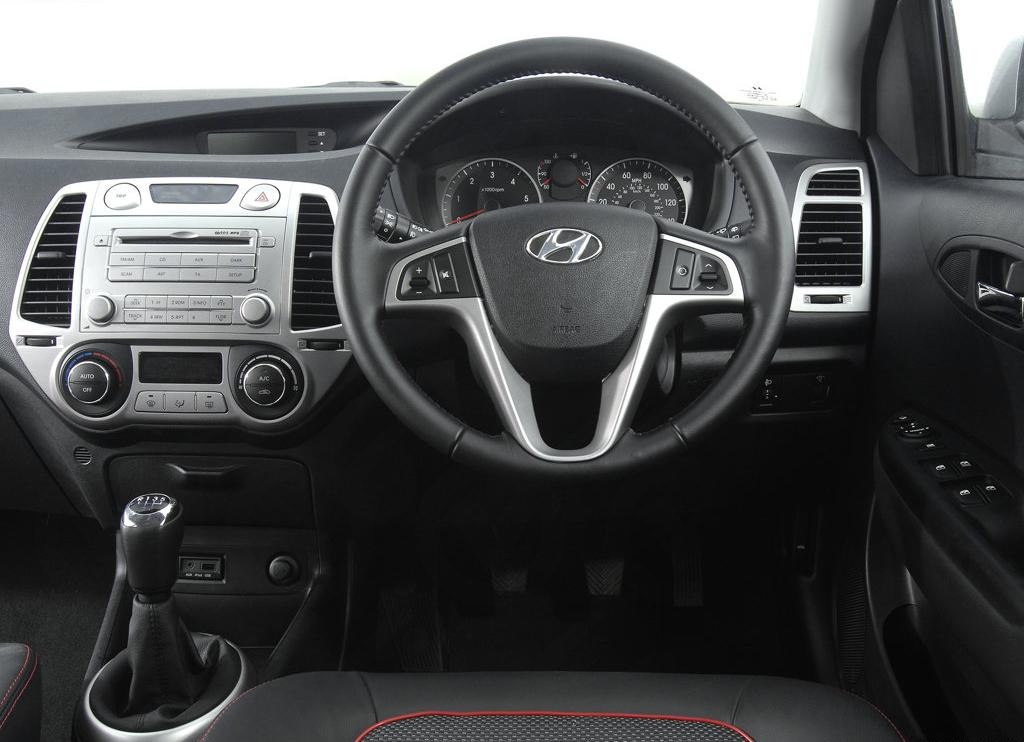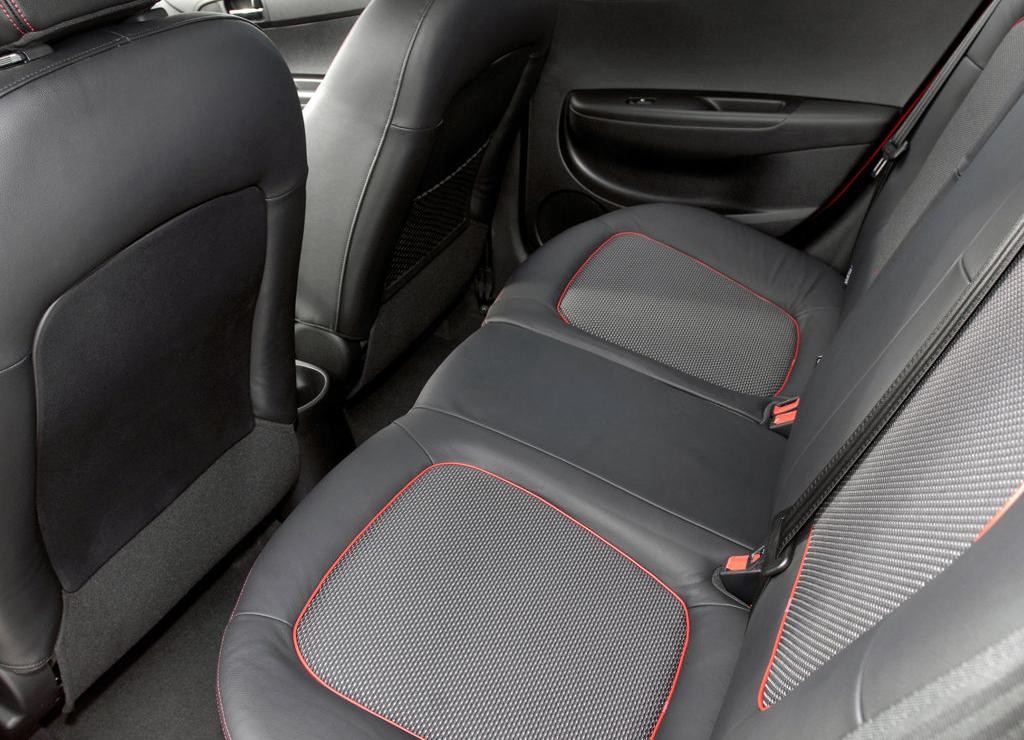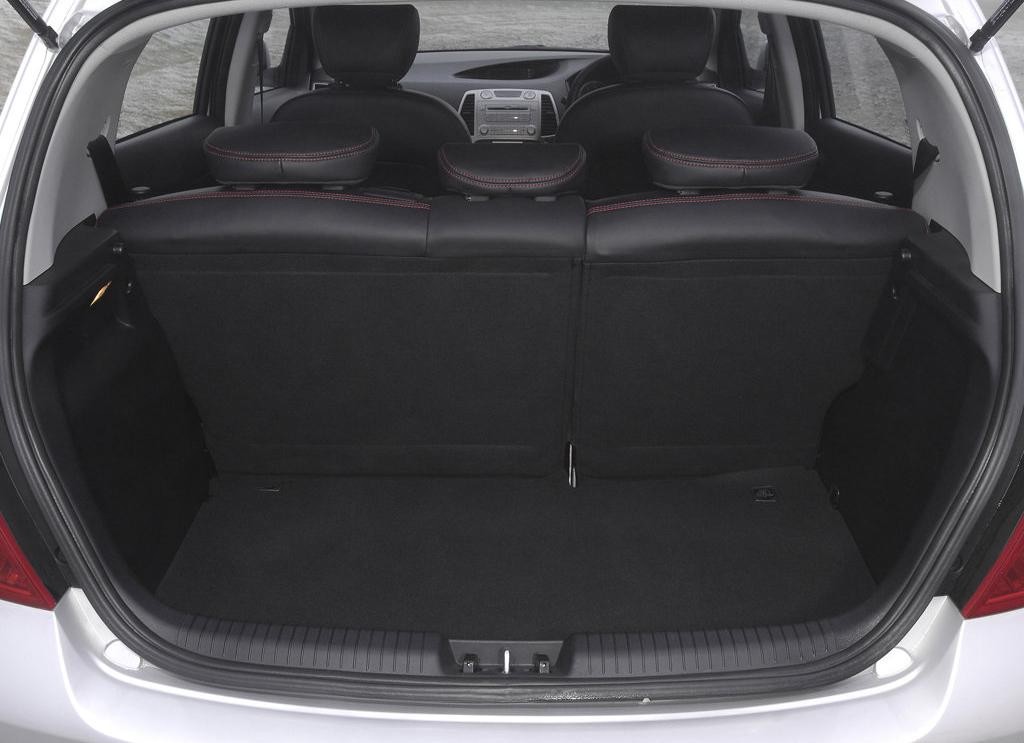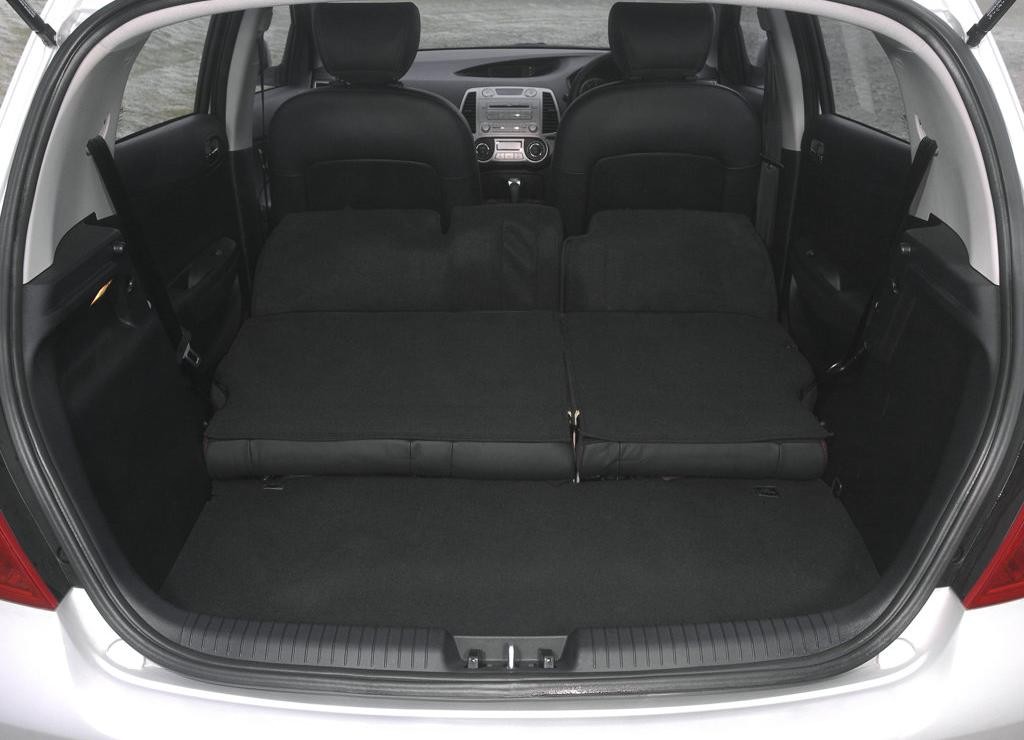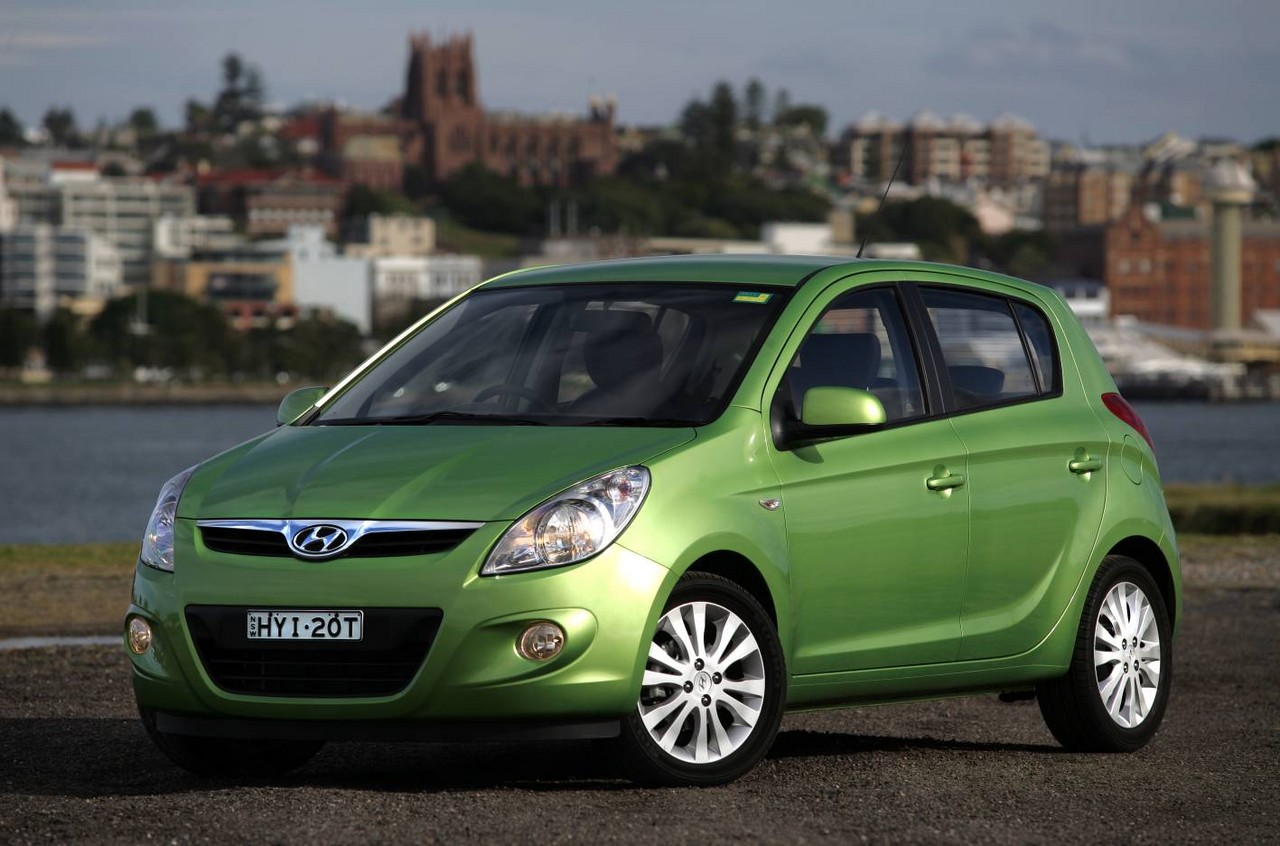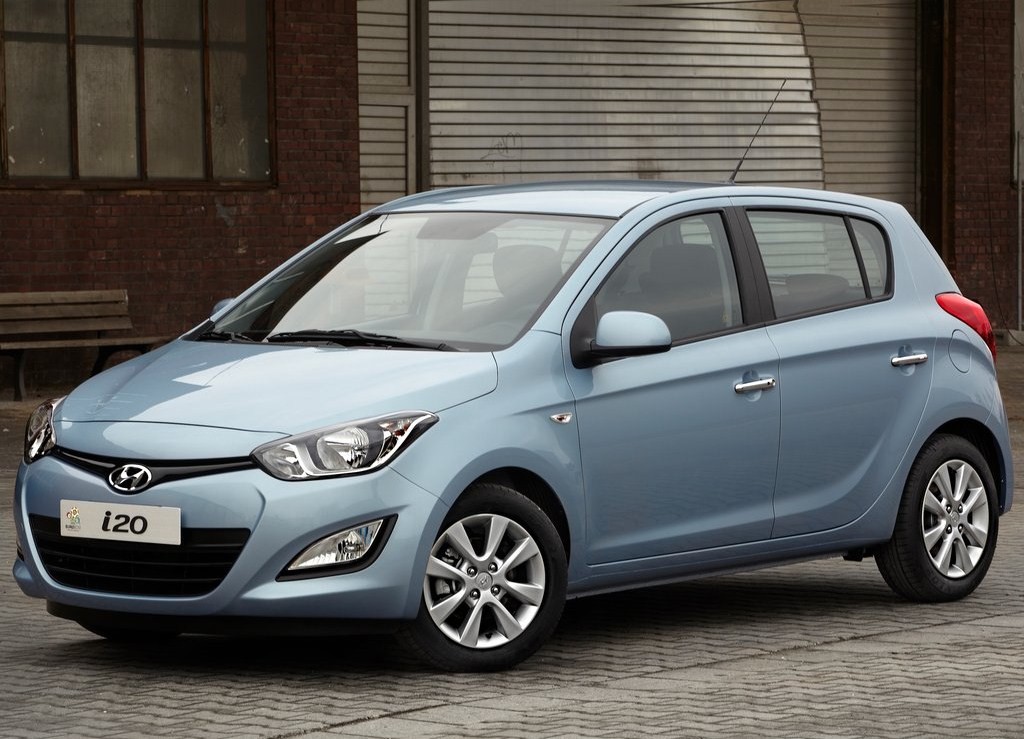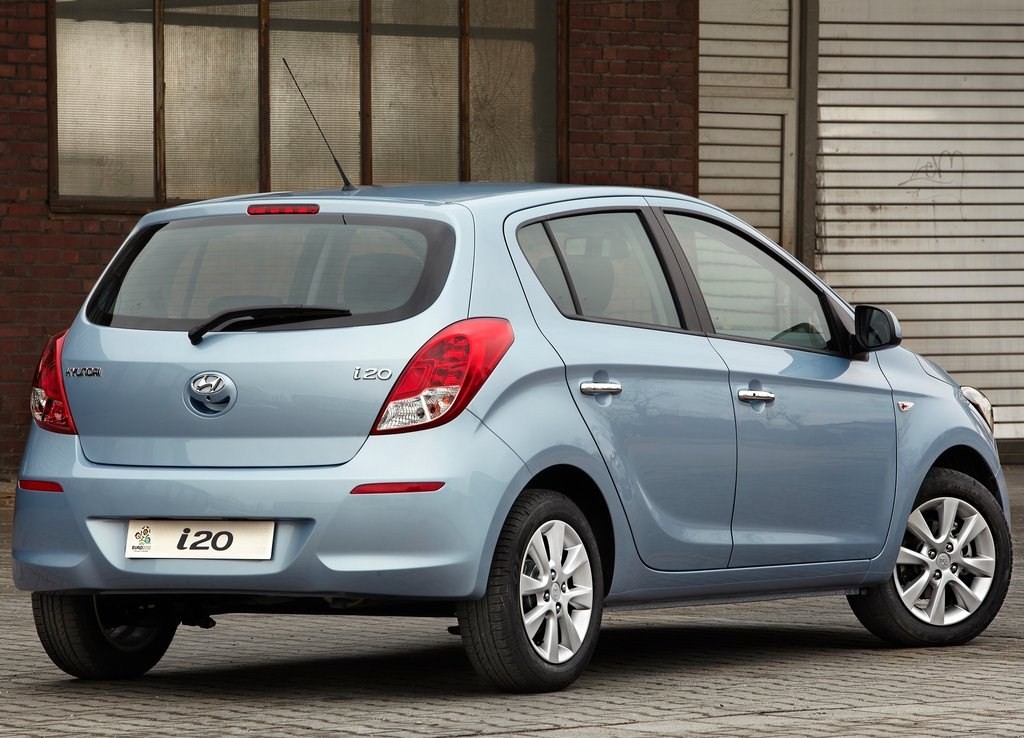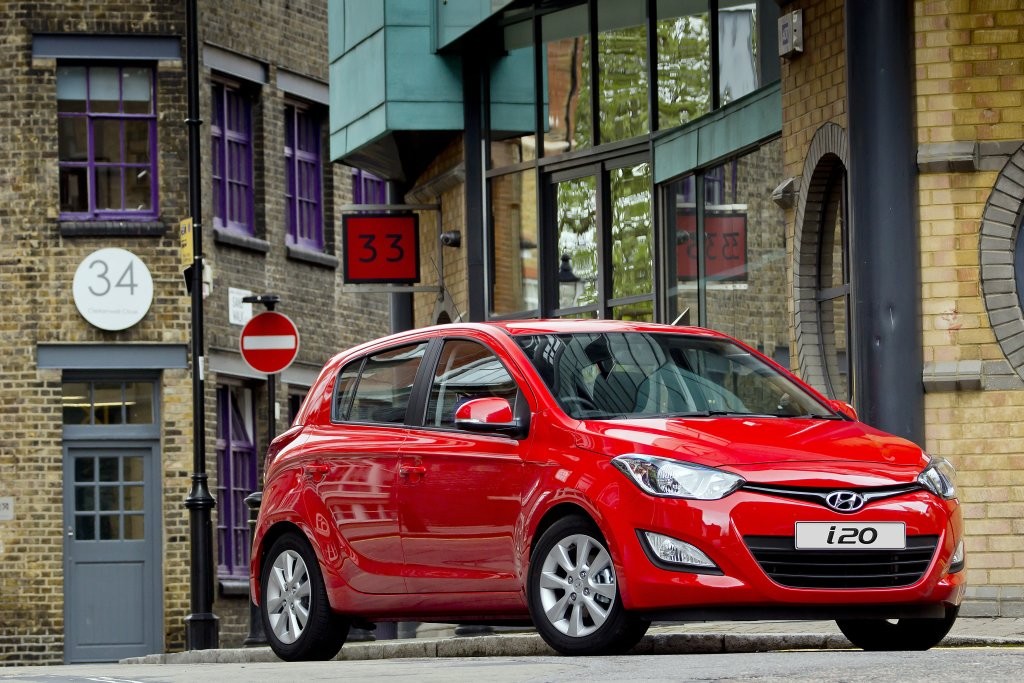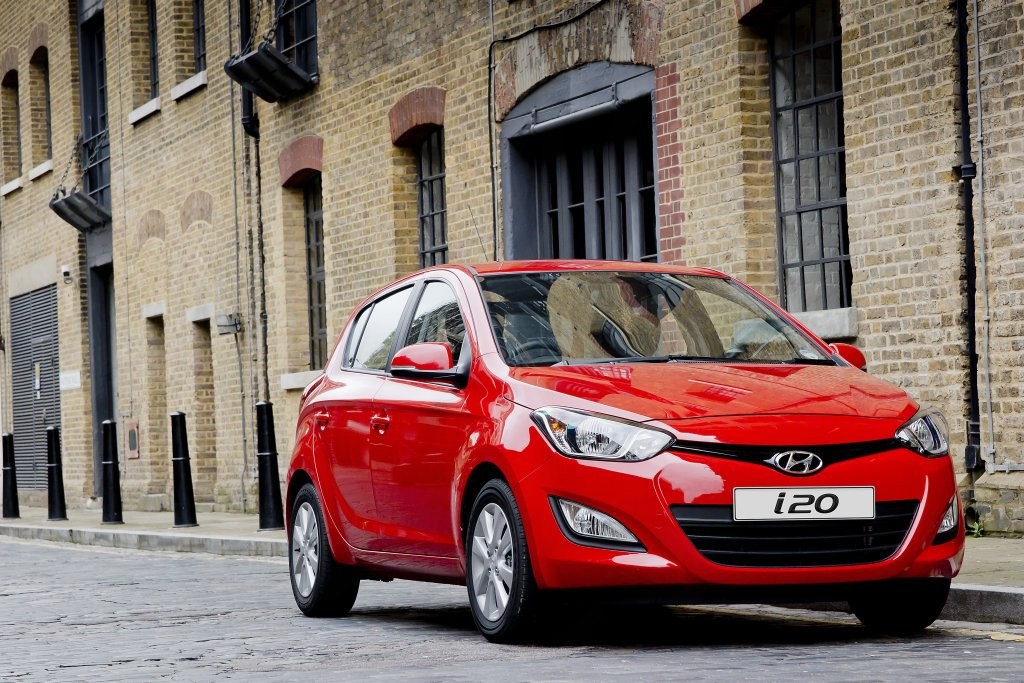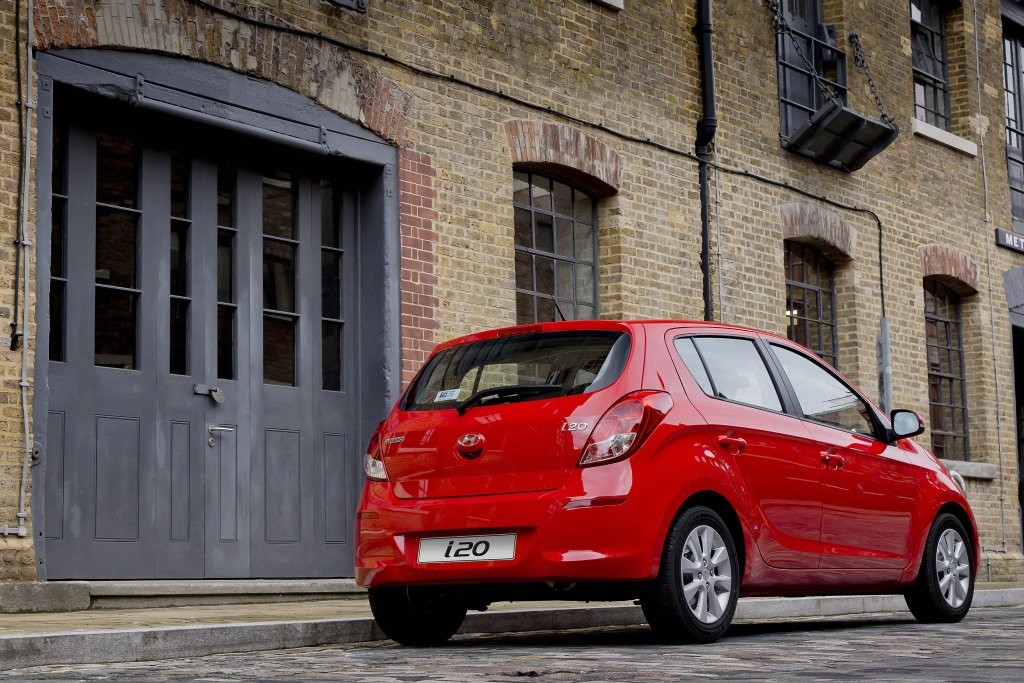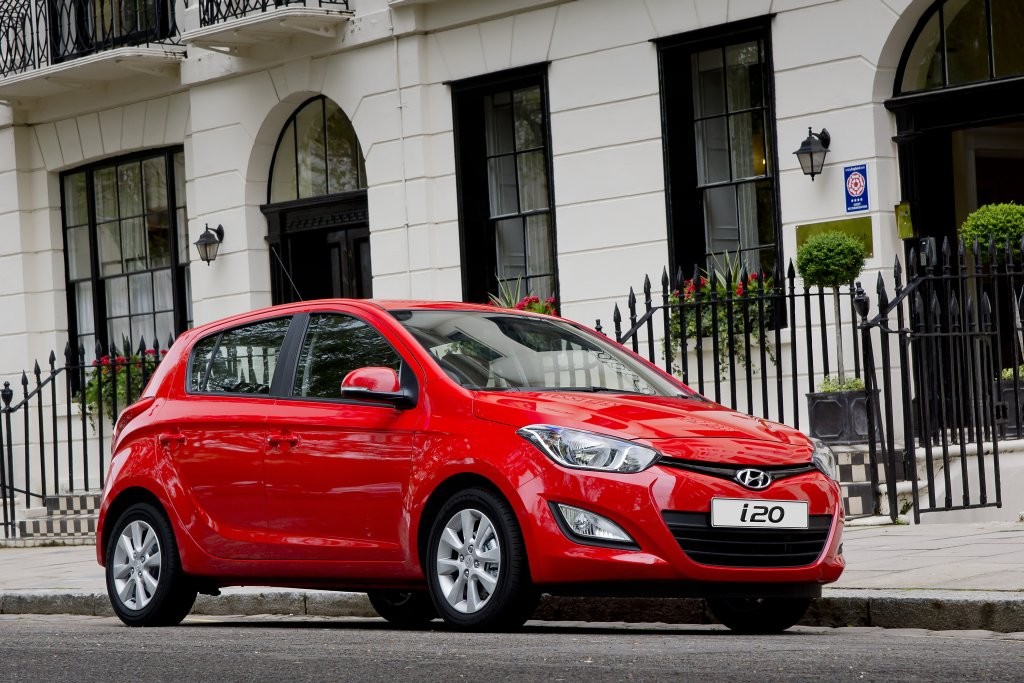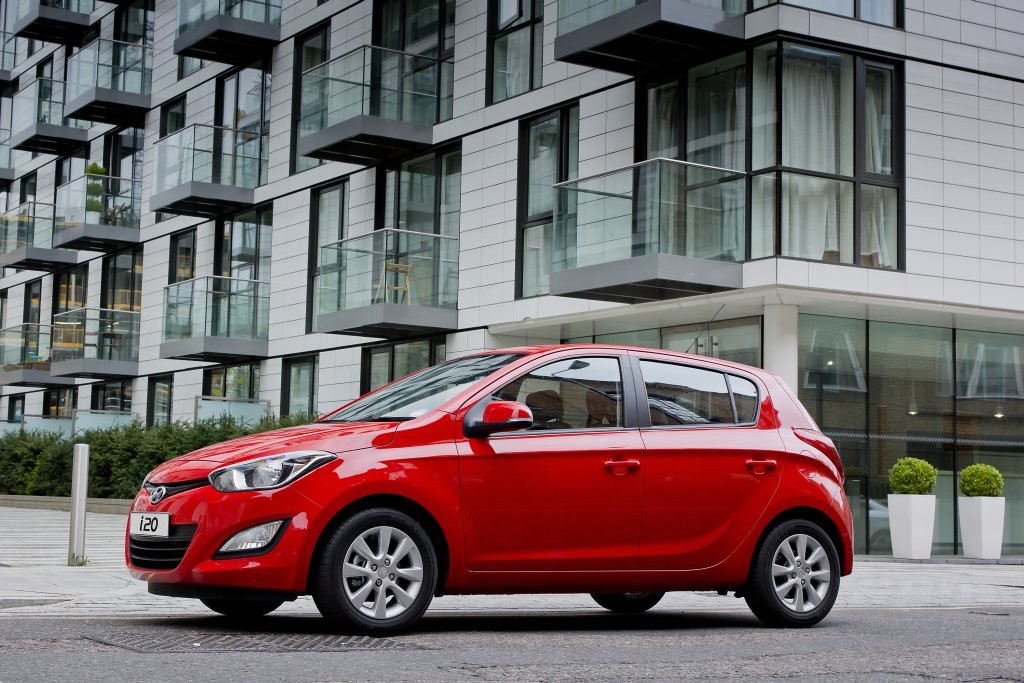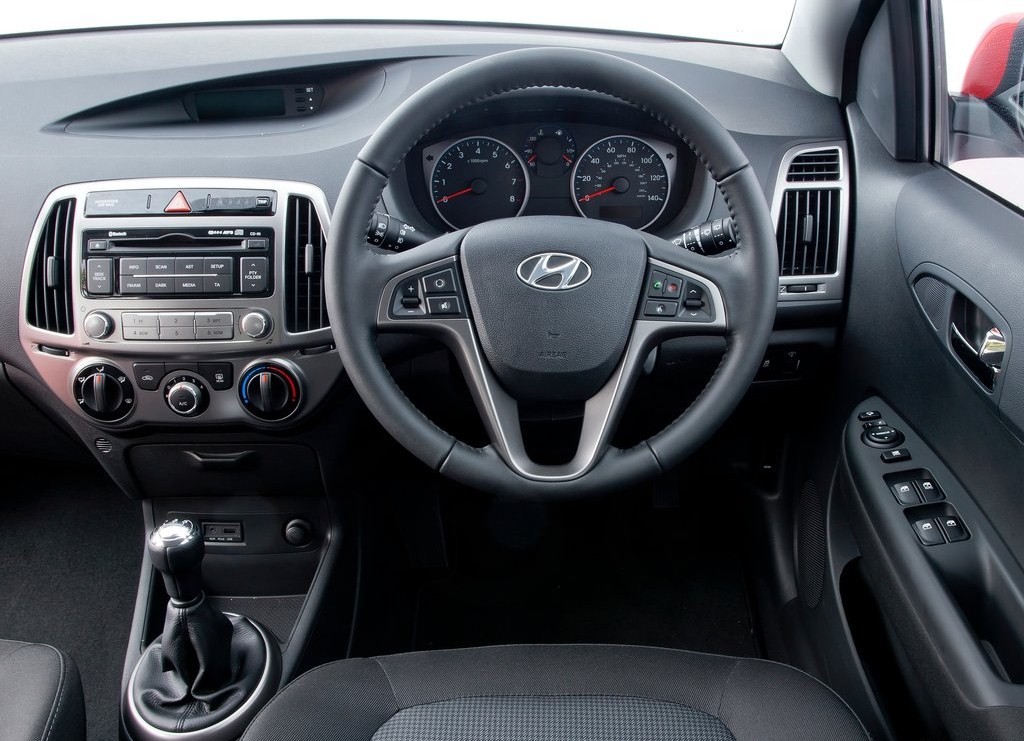
- Willing and fuel-efficient petrol engines
- Comfortable seats
- Good ergonomics
- Cabin lacks sound insulation
- Inconsistently weighted steering lacks precision
- Suspension lacks low-speed compliance (especially on 16-inch wheels)
- Four-speed automatic transmission blunts performance
Review: Hyundai PB.I i20 (2010-12)
Overview
Released in July 2010, the Hyundai PB Series I (PB.I) i20 was available as a light, three- or five-door hatchback. Manufactured in Sriperumbudur, India, the front-wheel drive i20 was powered by 1.4- and 1.6-litre four-cylinder petrol engines that were mated to either five-speed manual or four-speed automatic transmissions. In July 2011, however, the range was simplified as the 1.6-litre engines were discontinued. The full range is given in the table below.
Dimensions and suspension
Compared to its Hyundai Getz predecessor, the i20 had a 70 mm longer wheelbase (at 2525 mm), was 115 mm longer (3940 mm), 45 mm wider (1710 mm) and 5 mm lower (1490 mm). Furthermore, the i20 had 295 litres of cargo volume with the rear seats in position, though this increased to 1060 litres when folded. The i20 was fitted with MacPherson strut front suspension and torsion beam rear suspension.
| Body | Variant | Years | Engine | Trans. | Peak power | Peak torque |
|---|---|---|---|---|---|---|
| 3dr hatch | Active | 2010-12 | 1.4-litre petrol I4 | 4sp auto, 5sp man. |
74 kW at 5500 rpm | 136 Nm at 4200 rpm |
| 5dr hatch | Active | 2010-12 | 1.4-litre petrol I4 | 4sp auto, 5sp man. |
74 kW at 5500 rpm | 136 Nm at 4200 rpm |
| Elite, Premium |
2010-11 | 1.6-litre petrol I4 | 4sp auto, 5sp man. |
91 kW at 6300 rpm | 156 Nm at 4200 rpm |
Safety equipment
Initially, standard safety equipment for the i20 Active included dual front airbags, ABS, electronic brake force distribution, brake assist, electronic stability control, traction control and front seatbelts with pretensioners and load limiters; the Elite and Premium were also fitted with front side (thorax) airbags and full-length curtain airbags. From October 2010, however, the Active was also fitted with front side and curtain airbags.
Euro NCAP and ANCAP assessments
In Euro NCAP testing , the i20 – when fitted with dual front airbags, front side airbags and curtain airbags – received a five star safety rating which included an 88 per cent adult occupant protection rating and an 83 per cent child occupant protection rating. Under ANCAP’s methodology, this testing resulted in a five star adult occupant protection rating of 34.07 out of 37.
When fitted with dual front airbags – but not side or curtain airbags – ANCAP assessed the i20 as having a four star adult occupant protection rating with a score of 28.33 out of 37; in the side impact test, there was a moderate risk of serious chest injury and a slight risk of abdomen injury for the driver.
Features
Standard features for the i20 Active included 15-inch steel wheels, a four-speaker sound system with CD player, WMA/MP3-compatibility, iPod connectivity, USB and auxiliary inputs, air conditioning, a cooled glovebox, 60/40 split and folding rear seats, remote central locking, power windows and mirrors, a height and reach adjustable steering wheel, a height adjustable driver’s seat, an alarm and immobiliser. For five door models, power folding mirrors were also fitted as standard.
The i20 Elite was further equipped with 15-inch alloy wheels, a six speaker sound system, front fog lights, leather-wrapped steering wheel with audio controls, cargo net and trip computer. Beyond this, the range-topping Premium variants added 16-inch alloy wheels, climate control air conditioning, combination cloth/leather seats, front map lights and a driver’s armrest.
October 2010: i20 update
In addition to improved standard safety equipment, the i20 underwent a minor update in October 2010 (for the 2011 model year) – changes included blue lighting for the instrument cluster, centre stack and climate controls (previously amber), and Bluetooth audio streaming.
Related links
Review: Hyundai PB.II i20 (2012-15)
Overview
Released in June 2012, the PB Series II (PB.II) i20 introduced cosmetic updates and a new six-speed manual transmission for improved fuel economy. Visually, the PB.II i20 could be identified by its hexagonal radiator grille, new rear bumper and door mirror indicator lights. Furthermore, the Active variants were fitted with 15-inch steel wheels (previously 14-inch steel wheels) for improved ride comfort, while the Elite variants received fog lights and new alloy wheels designs. Inside, there were new fabrics, a centre stack with piano black trim and a one-touch lane change function for the indicator stalks.
| Body | Variant | Engine | Trans. | Peak power | Peak torque |
|---|---|---|---|---|---|
| 3dr hatch | Active | 1.4-litre petrol I4 | 4sp auto, 6sp man. |
74 kW at 5500 rpm | 136 Nm at 4200 rpm |
| 5dr hatch | Active, Elite |
1.4-litre petrol I4 | 4sp auto, 6sp man. |
74 kW at 5500 rpm | 136 Nm at 4200 rpm |
Safety equipment
Compared to its PB.I predecessor, the PB.II i20 was fitted with variable-rate electric power steering and Hyundai’s Vehicle Stability Management (VSM) system which could apply counter-steering assistance to guide the driver to the correct steering direction in the event that the driver reacted too slowly or tried to steer in the incorrect direction to maintain vehicle control.
Features
Standard features extended to include Bluetooth audio streaming, Bluetooth mobile phone connectivity, power folding door mirrors and a trip computer.
Brochures
Related links
- Press release: Hyundai PB.II i20 (June 2012)
- Specifications: Hyundai PB.II i20 (October 2012)
- Wikipedia.org: Hyundai PB i20
